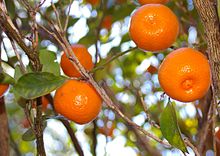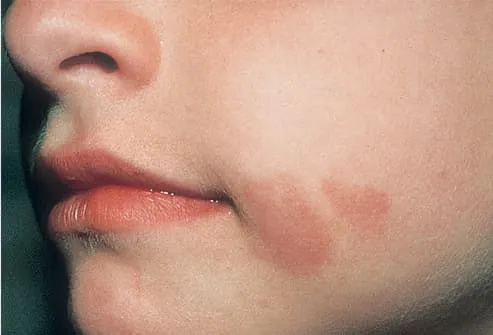However, I will always cringe at the slight mention of calamansi as a part of the Pinay's natural and cheap arsenal of whitening products. Heck, it is so common here in the Philippines that my mother believed it can whiten my elbows if I'd scrub calamansi on them every day.
But being the naturally curious cat that I am, I asked myself how calamansi will whiten my dark spots. What substances are present in calamansi which can contribute to whitening? I mean, it may be much more efficient to use a certain chemical with known concentration than to slice calamansis open and go by trial and error. I've heard a lot of women saying calamansi has vitamin C and that it was the panacea so again, I asked myself if I'm better of scrubbing ground vitamin C tablets instead of calamansi.
Calamansi or calamondin (Citrofortunella microcarpa), according to Wikipedia, is a fruit tree in the family Rutaceae native to the Philippine Islands region. Calamansi is a "cross breed" between a mandarin orange and a kumquat fruit. It is used in a variety of ways, some as stain remover, as cooking ingredient, and as skin whitening product.It was also mentioned that the fruit has "an ingredient called D-limonene that destroys the wax coating of insects' respiratory system, this causes the insects to suffocate". Interesting.
 |
| We rarely see it this ripe in the Philippines |
Just like any other citrus fruit, calamansi contains various phytochemicals, including citric acid, ascorbic acid, and essential oils made primarily of insect-wax-destroying limonene which may cause skin irritation. A citrus fruit can have high concentrations of citric acid, constituting up to as much as 8% of dry weight for lemons and limes. Citric acid is an alpha hydroxy acid (AHA) which is used in skin peels and is beneficial for the skin, assuming of course you know how to administer the correct concentration. Ascorbic acid is the better skin saver, which is a milder acid peel compared to citric acid and is right now, a huge movement in skin care. I've been personally looking for a vitamin C serum, but they're too expensive (around 2000 php or more).
Citrus fruits can therefore, really aid with brightening of the skin, assuming the user can regulate the acidity of the peel, which is next to impossible using the raw fruit. Also, there is also a risk of irritation from the other less publicized substances they have. In fact, the fruit juice itself may also cause skin discoloration if the skin is immediately exposed to the sun after application of the juice.
 |
| Phytophotodermatitis, from webmd.com |
If one has to harness the claims of vitamin C and AHA peels, it is best to steer clear of the risk of acid burn, skin irritation and possible skin darkening (hyperpigmentation), and just buy products containing the skin-beneficial ingredients. Better safe than sorry.


thanks a lot. this information helps me.:)
ReplyDeleteCan I get the references said on this blog, especially on the part where it says that calamansi has d-limonene?
ReplyDelete